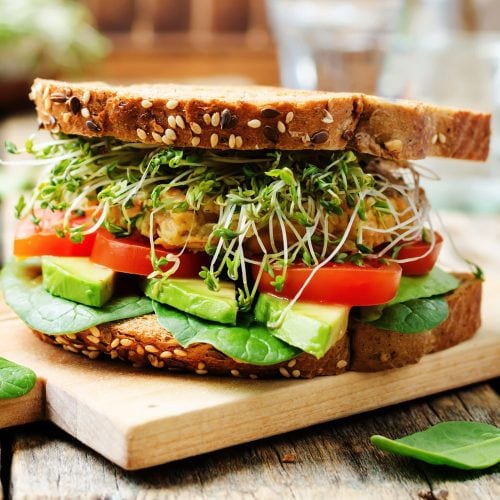
Fibre is not a sexy component of food. Even the word sounds dull and dry. ‘High fibre’ is not a label that tends to fill us with joy when we see it, even though most of us know that we need fibre in our diets to keep things ‘moving’ and keep our guts healthy.
That’s probably why we don’t, as a rule, get enough fibre. The average intake for adults in New Zealand is 20g a day, but it’s recommended that for optimal health and to prevent disease, we should get 28g (women) and 38g (men). So we’re falling well short, and the consequences are not great. New Zealand has one of the highest rates of bowel cancer in the world. (That’s not solely due to our low-fibre diets, but it doesn’t help.) We also have high rates of cardiovascular disease, type 2 diabetes and obesity, all of which are linked with poor, low-fibre diets.
So we all need to up our game in this area, and not just to help our digestion and lower our risk of cancer. We also need fibre to keep the population of bacteria we carry around in our guts — trillions of microbes in each of us — in good form. The health of our gut bacteria affects our overall health in myriad ways that science is even now only discovering. What’s emerging is the view that if we want to stay healthy and happy, we need to keep our microbial passengers healthy and happy, too.
Good microbes in our guts ferment the fibre we eat to produce nutrients for the cells that line the bowel, helping to keep it healthy. They help to keep the correct pH balance in the large intestine, making it a beneficial environment for intestinal cells. They help to make our stools bulkier and easier to pass. And they crowd out any nasty bacteria that enter the digestive tract, preventing them from multiplying and making us sick.
So how do we keep our microbes happy? We need fibre, but not just that — we need different types of fibre. Just eating fruit and veges won’t do it — we need to mix it up with fibre from a range of sources.
The main types of fibre are soluble and insoluble. Soluble fibre slows the time it takes food to pass through the stomach and small intestine, which helps with the absorption of nutrients. It’s found in oats, barley, psyllium, fruits with the skin on, vegetables and legumes.
Insoluble fibre speeds up the time it takes for waste to move through the large intestine, which helps to produce larger, softer stools and reduces the time toxins stay in the bowel. Insoluble fibre is found in wholegrain cereals, pasta, rice and quinoa.
Another important sub-type of fibre that’s worth knowing about is resistant starch. It’s found in very specific foods including legumes, firm bananas and cold, cooked pasta and potatoes. Resistant starch is fermented by good bacteria in the bowel, which produces short-chain fatty acids (a type of fat) that are important for the health of cells in the bowel, and our overall health. It seems those of us eating a typical Western diet probably don’t get enough resistant starch compared with people in countries where the diet revolves around whole plant foods.
The moral of the story here is, as with many healthy food tales: eat a wide variety of good, whole food. And maybe include a little potato salad!
How to get a high-fibre day
Breakfast
Smoothie: 300ml trim milk, 1 banana, 1/2 cup mixed berries, 1 cup of spinach and 2 tablespoons LSA
1 slice grainy toast with 1/4 avocado and tomato
(2450kJ; 14g fibre)
Lunch
Sandwich with 2 slices grainy bread, 2 tablespoons hummus, 1/4 cup grated carrot, 50g cooked chicken, 1 tomato, 1 tablespoon pumpkin kernels
Trim latte
20g dark chocolate
(2480kJ; 10g fibre)
Dinner
Butter chicken with chickpeas, spinach and yoghurt
(2430kJ; 12g fibre)
Snacks
3 tablespoons (27g) mixed nuts
1 pear
1 cup plain popcorn
(1180kJ; 6g fibre)
Day total: 8540kJ, 42g fibre
www.healthyfood.com










